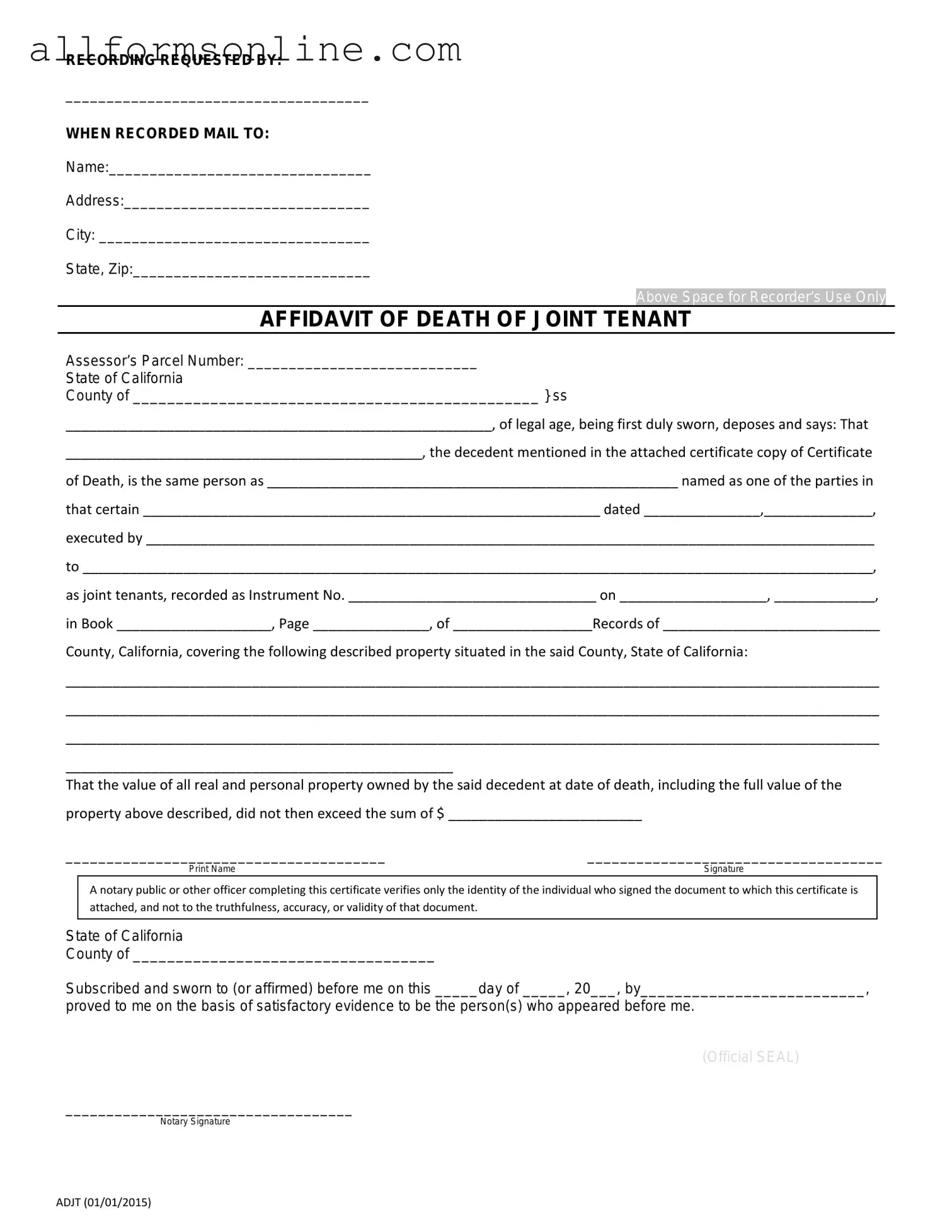What is the California Death of a Joint Tenant Affidavit form?
The California Death of a Joint Tenant Affidavit form is a legal document used to remove the deceased joint tenant's name from the title of a property. This form facilitates the transfer of ownership to the surviving joint tenant without the need for probate. It serves as proof that one of the joint tenants has passed away and that the surviving tenant is entitled to the full ownership of the property.
Who can use this affidavit?
This affidavit can be used by the surviving joint tenant of a property. The surviving tenant must be listed on the title as a joint tenant with rights of survivorship. This form is applicable only when the deceased tenant's name needs to be removed from the property title due to their death.
What information is required to complete the affidavit?
To complete the affidavit, the surviving joint tenant must provide specific information. This includes the names of both joint tenants, the date of death of the deceased tenant, the property address, and details regarding the ownership structure. Additionally, the affidavit must be signed and notarized to ensure its validity.
Do I need to file this affidavit with a court?
No, the California Death of a Joint Tenant Affidavit does not need to be filed with a court. Instead, the completed and notarized affidavit is typically recorded with the county recorder's office where the property is located. This recording updates the public records to reflect the change in ownership.
Is there a fee to record the affidavit?
Yes, there is usually a fee associated with recording the affidavit at the county recorder's office. The fee can vary by county, so it is advisable to check with the local office for the exact amount. Payment methods and any additional requirements may also differ by location.
What happens if there are multiple joint tenants?
If there are multiple joint tenants and one passes away, the remaining joint tenants can use the affidavit to claim full ownership of the property. Each surviving joint tenant must sign the affidavit, and it should be recorded to reflect the change in ownership. If there are no surviving joint tenants, the property may need to go through probate.
Can this affidavit be used for other types of property?
Yes, the California Death of a Joint Tenant Affidavit can be used for various types of property, including residential real estate, commercial properties, and other assets held in joint tenancy. However, it is essential to ensure that the property is indeed held in joint tenancy with rights of survivorship for the affidavit to be applicable.
